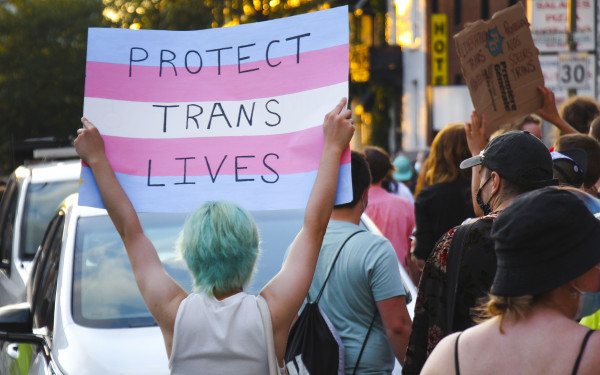Marking the Course for the Future of Diversity in Video Games
2nd Annual Symposium on History of Gender in Games Analyses Progress
As an industry, many steps forward have been taken in regards to the representation of not only women in games, but the LGBT community as well.
Thirty years in the making, these steps are the first of many. Now that the 2nd annual symposium of the History of Gender in Games is over, the games industry, academics and game players are getting a better picture of what the state of gender is in video games.
“A lot of things are changing in the game industry, game culture, game representations and the studies of gender in game,” said Gabrielle Trépanier-Jobin, one of the symposium’s organizers. “The point was to document these changes, explore these changes.”
The two-day conference held at the Grande Bibliothèque featured a myriad of scholars in game studies.
This year the symposium was focused on the History of Gender in games, a relevant and hotly debated topic in the video games industry. With the main issues being the representation and diversification of gender in games, the symposium addressed many of these topics head on.
“It was planned before all this happened, but obviously Gamergate makes it even more relevant, people understand the need to talk about this, the emergency to fix some problems,” said Trépanier-Jobin.
After UdeM professor Carl Therrien organized the 1st symposium last year, Trépanier-Jobin, who did her research in Massachusetts Institute of Technology, planned this year’s conference.
Topics ranged from the heteronormative culture of competitive gaming, to video game controllers being the extension of male and female genitalia.
However, the one recurring theme to the conference was the fact that many speakers noted that their findings from the mid-1980s are still relevant when talking about about gender in games.
In fact one of the speakers, Emily Flynn-Jones, from York University, made a game in which the audience had to determine whether a derogatory quote was made in the 1990s or now, highlighting the recurring issue.
A contributing factor to this is the lack of movement from mainstream developers. Despite adding several optional female characters, the diversity in games is still lacking and the industry is still dominated by heterosexual white males.
“[The fact] that [game developers] are paying attention to representation is a good sign because it demonstrates industry investment in it,” said Adrienne Shaw, a professor from Temple University.
Shaw then referenced an article where the number of women either on stage or in games were counted and compared to the number of straight white males, saying that it’s still a small minority.
Games like Dishonored, Assassins Creed and Tomb Raider do feature strong female characters or present gender roles in a critical way, but they use hegemonic storytelling devices, said Nine Huntemann from Suffolk University.
“Those are games that simply just have female avatars, but I don’t know they necessarily take into account the different ways that people play,” Huntemann said. “They’re still very focused on the hardcore, first-person approaches.”
“People don’t expect games to be better, so they’re not going to invest in caring that much,” — Adrienne Shaw, Temple University
Another area that needs addressing is the marketing. When the Nintendo Entertainment System first burst onto the scene, the console was marketed as a family device; however there was sudden switch and consoles were marketed to men, which eventually created a hostile environment for non-heteronormative males.
“A big part of it had to do with the big video game crash in the 1980s, where a lot of game designers and publishers left the market,” Huntemann said. “Any company that was left standing, and there weren’t many, had to rethink their focus and they came out focusing that time on a boy market.
“Nintendo proved that if you did that you can be successful so a lot of other game [companies] just followed suit.”
This change in marketing created a disconnect between developers and a large portion of the players. In her research, Adrienne Shaw uncovered the consequences of this narrow marketing.
“A lot of the people I spoke to didn’t necessarily feel that they were the target market for games and because of that, they felt like they couldn’t expect any better.” Shaw said.
“It wasn’t so much that it didn’t matter at all to them,” she said. “They don’t expect games to be better, so they’re not going to invest in caring that much.”
Even though the rocky road to get here has been well-documented, it doesn’t seem like it will get any easier. But there is some cautious optimism that the games industry will eventually diversify itself.
“It’s our job as game scholars to critique. To make the changes happen sooner or faster,” Trépanier-Jobin said. “There’s always going to be Call of Duty with muscular men and it’s fine. The problem is that if we have only this and no other options.”
3_859_575_90.jpg)
The industry needs a more diversified video game landscape, she continued, with more than just the classic narrative of saving women or killing.
This diversity could even push the game industry, encourage innovation and stimulate new games, Trépanier-Jobin said. “Now we’re kind of trapped in the same narrative and the same characters.”
“We’re at a critical turning point,” Shaw from Temple University said. “People have been pushing for this for decades, and it feels like finally somebody is starting to listen, which is also why you see a big backlash against it.”
Trépanier-Jobin said this backlash, like with Gamergate, as being both positive and negative.
“We can see this as very wrong, like ‘oh my god it’s so bad it’s going crazy,’” she said. “But when there’s a reaction, it’s also a sign that something is changing and it could be encouraging, depending on how you see it.”

_900_600_90.jpg)
2_900_647_90.jpg)
_600_832_s.png)



_600_375_s_c1.png)
_(1)_600_375_s_c1.png)